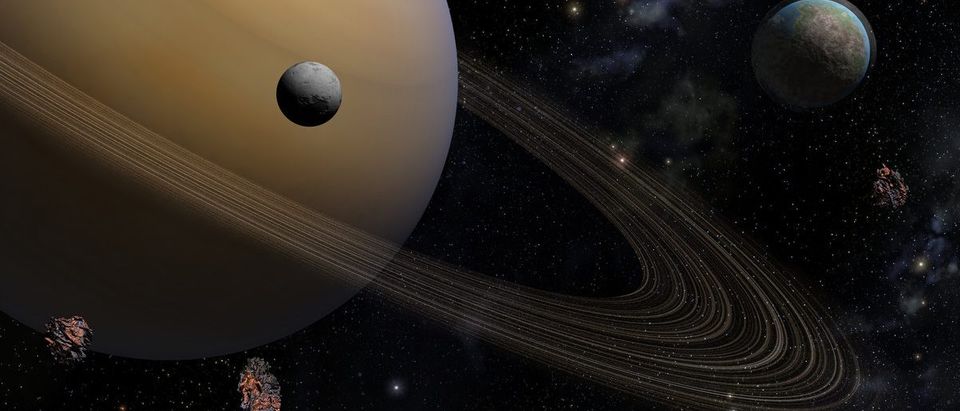There is an ocean deep within Saturn’s moon Dione, according to new data from NASA’s Cassini probe published Wednesday.
Researchers at the Royal Observatory of Belgium found that gravitational data from NASA’s recent Cassini mission to Saturn’s moon can be explained if Dione’s crust literally floats on an ocean located 62 miles below the surface. The ocean is probably more than 10 miles deep and surrounds a large rocky core.
Scientists generally agree that sub-surface oceans under moons are one of the most likely places in our solar system where alien life could develop. Life could potentially exist in Dione’s ice-covered ocean — perhaps in an environment similar to deep-ocean hydrothermal vents where life on Earth is believed by some to have emerged.
Dione isn’t the only icy moon with a sub-surface ocean. NASA officials announced in late September that an ocean likely exists under the icy exterior of Jupiter’s moon Europa and two additional moons of Saturn called Enceladus and Titan. Researchers found that both Enceladus and Dione are likely “global icebergs” floating on top of an ocean of water.
These “iceburgs” would be extremely unstable, occasionally causing water to break out of the crust and shoot into space. This is a frequent occurrence on Enceladus, the crust of which is only a few miles thick in locations, causing massive geysers to erupt through the moon’s crust and eject water into space.
“As an additional principle, we assumed that the icy crust can stand only the minimum amount of tension or compression necessary to maintain surface landforms,” Mikael Beuthe, lead author of the new study, said in a press release. “More stress would break the crust down to pieces.”
Europa and Enceladus probably both have watery and salty oceans, similar to those of Earth, below the ice, likely kept warm by complex gravitational interactions and the planet core. Titan also has liquid water below its surface, as well as vast amounts of liquid methane and ethane. These subsurface oceans make the moons some of the most likely places in the solar system for alien life to develop.
“Like Enceladus, Dione librates but below the detection level of Cassini,” Antony Trinh, one of the study’s co-authors, said in a press statement. “A future orbiter hopping around Saturn’s moons could test this prediction.”
NASA used the Hubble Space Telescope to find evidence of water ice plumes leaving Europa and suspects that the moon has an icy shell on top of an ocean of liquid water, but isn’t ready to confirm it yet. NASA even found clay-like minerals associated with organic matter on Earth on the icy crust of Europa.
NASA is already constructing a probe to Europa, dubbed, “The Europa Clipper,” which would investigate the potential habitability of the icy moons for purposes of human colonization and alien life.
Attempts by NASA to further explore Europa were prevented by President Barack Obama. The president requested NASA’s mission to Europa receive only $49.6 million in 2017, far less than the $175 million the mission got from Congress in 2016. Much of the money not spent on the probe would go to global warming research. A rival proposal from the House of Representatives would allocate $260 million to fully fund the mission for the next year.
Send tips to andrew@
All content created by the Daily Caller News Foundation, an independent and nonpartisan newswire service, is available without charge to any legitimate news publisher that can provide a large audience. All republished articles must include our logo, our reporter’s byline and their DCNF affiliation. For any questions about our guidelines or partnering with us, please contact licensing@dailycallernewsfoundation.org.


